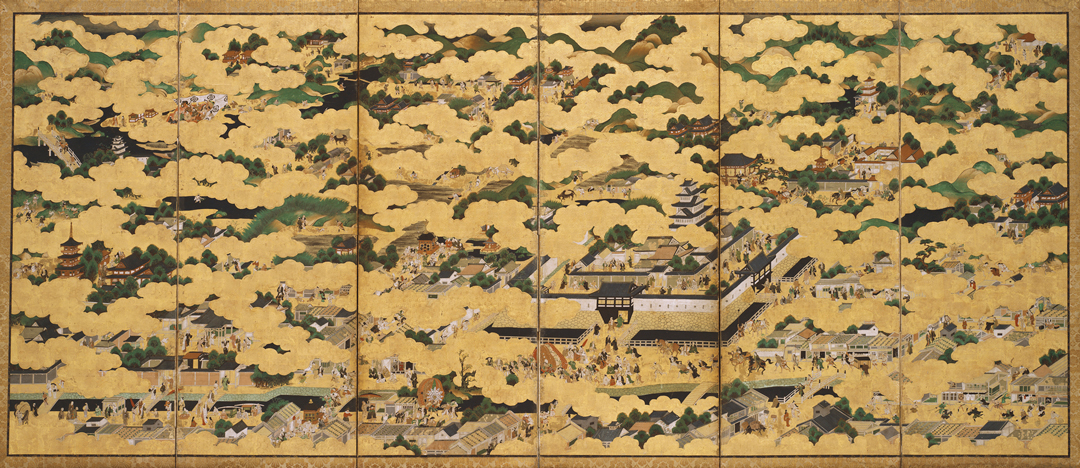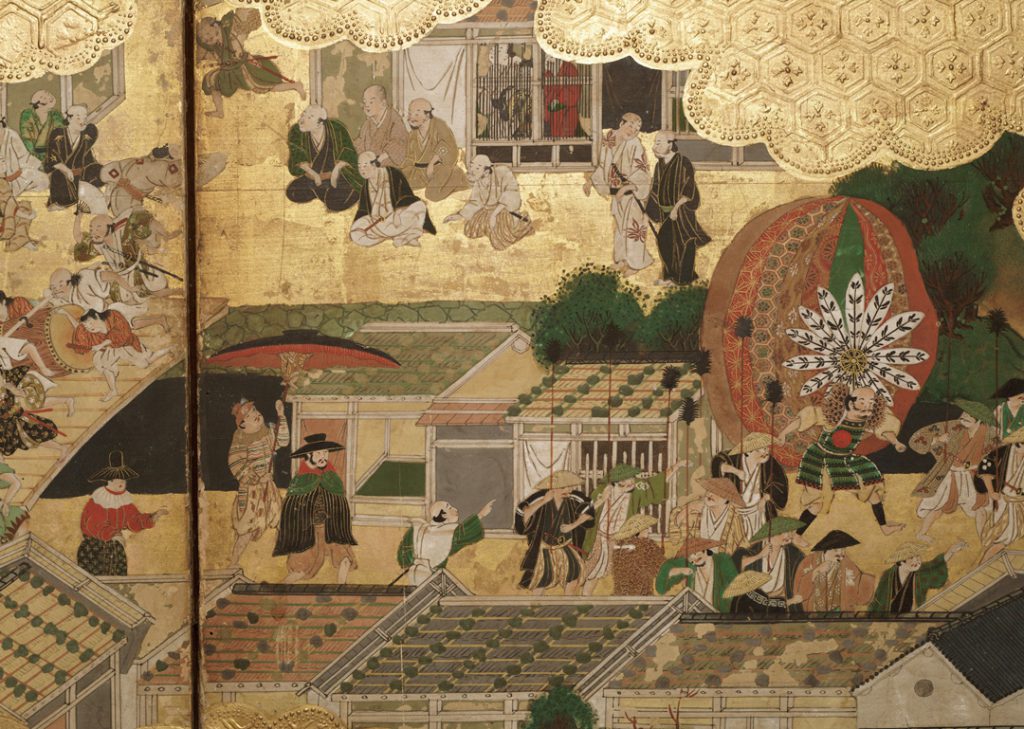Object of the Week: Scenes of Life in and around the Capital
SAM’s six-panel screen picturing Scenes of Life in and around the Capital serves to celebrate the ancient imperial capital of Kyoto, giving a flattering impression of the city as one that is full of jovial activity. Gold leaf, in the form of clouds, covers a large area of the screen and lends to Kyoto an air of royalty and prosperity. As a compositional element, the clouds divide this very large panel into bite-sized vignettes. When your eye scans across the panel, and up and down, it encounters figures sitting, running, parading, and celebrating in scenes alternately private and public. Both rural and urban citizens have a place here, as life in the city blends seamlessly with the surrounding countryside, and the city’s attractions are enjoyed by locals and tourists alike. What your eye won’t find in its flyover of Japan’s ancient capital is any element that disagrees with the established order and the abiding image of prosperity. The humdrum of day-to-day life, the majority of which involves work, doesn’t fit into the picture. Neither does illness, disease, or death much affect this heavenly realm.
The screen has interesting things to say about how we see, and how we aim to be seen. As I look at the screen, I’m reminded of spinning around and above Seattle during a special brunch in the Space Needle’s SkyCity restaurant (an experience I hope everyone has a chance to enjoy). To look over a city with great energy, lots happening, and an incredible geographic diversity brought, for me, feelings of joy and pride. Surely Kyoto’s citizens in the Edo period appreciated everything their city offered—its rich culture and vibrant lifestyle—in a similar way. It’s also worth noting how, from the top of the Space Needle, or standing in front of this screen, we take up the perspective of a passive observer. We watch others go about their lives without being seen ourselves and, with no fear of being caught watching, we’re encouraged to watch even more closely.

It’s this aspect of looking that contemporary artist Tabaimo has pointed to in her exhibition at the Seattle Asian Art Museum, Tabaimo: Utsutsushi Utsushi. In the show, Scenes of Life in and around the Capital relates meaningfully to Tabaimo’s video work Haunted House, seen nearby. Haunted House mimics the movement of an eye scanning a long row of houses, while our view is limited to a small circle, as if we are viewing these scenes through a telescope. In Haunted House and in SAM’s screen, stories present themselves one at a time, providing the viewer a steady stream of entertainment.
Tabaimo’s installation of the screen encourages us to take pause and ask: How do we see each other? From what perspective? With what agendas? From there, we might also ask how and why we present ourselves to the world, and whether that image carries pretension much like the screen’s gilded view of ancient imperial Kyoto.
—Jeffrey Carlson, SAM Collections Coordinator

